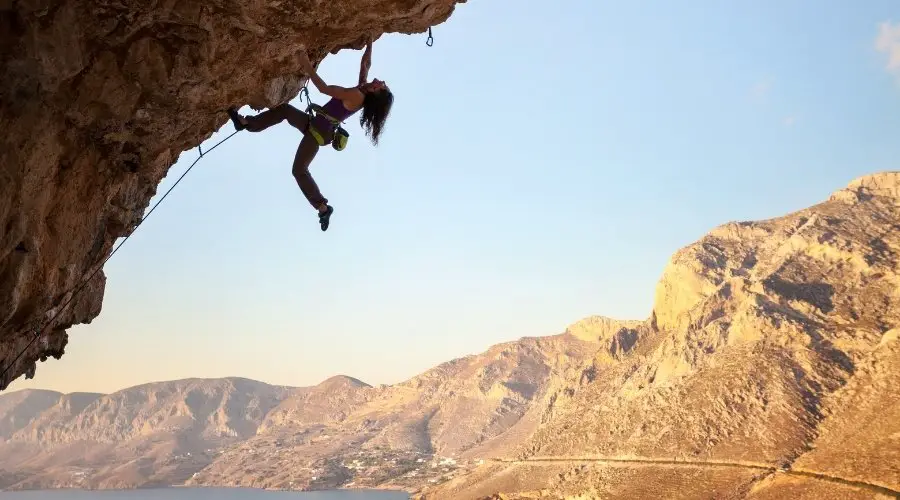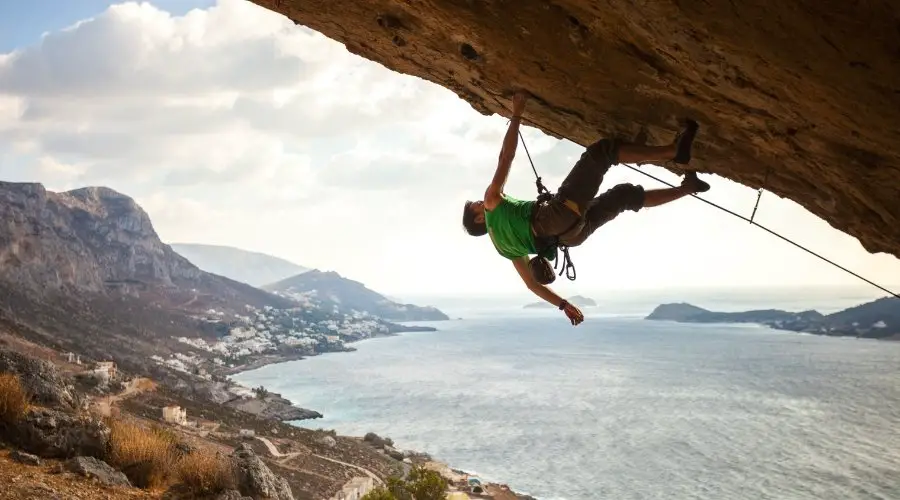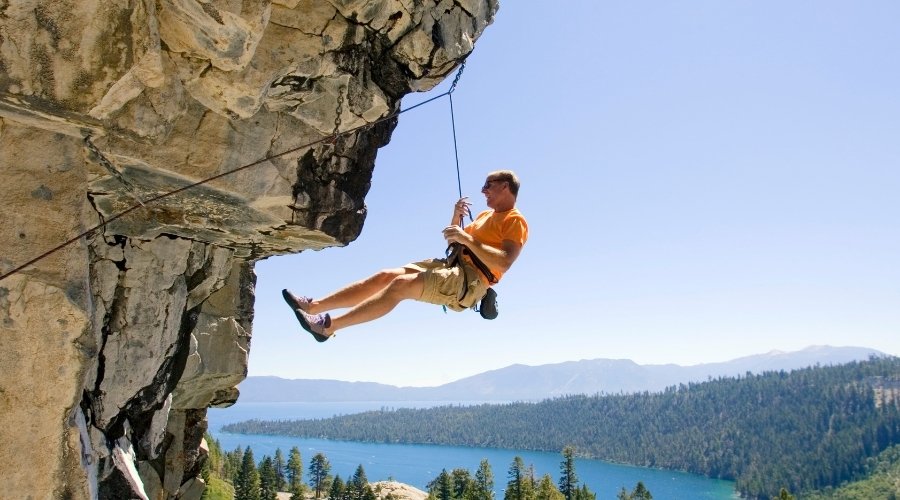Learning how to lead climb is the next logical step in a climber’s journey after top roping. That said, some climbers are not that logical and jump straight into lead climbing within a couple sessions. For others, it is quite a transition and can be a pretty scary experience. This begs the question, when are you ready to start lead climbing?
As a general rule, it is recommended that climbers be able to consistently top rope 5.10b to 5.10c (approximately 6a to 6a+) before learning to lead climb. This is because the majority of climbing gyms will test climbers’ lead ability on routes graded between 5.9 to 5.10b.
That said, determining when a climber is ready to start lead climbing is a bit more complicated than just looking at their climbing ability alone. This article explores everything you should take into consideration when deciding if it is the right time for you to start lead climbing.
Check out the current price of the most popular quickdraw sets on Amazon here!
When You Should Start Lead Climbing

To avoid any confusion, we should clarify what we are talking about by the term “lead climbing”. For the purposes of this article “lead climbing” is referring to sport climbing. If you are wondering when to start trad climbing or when to start leading trad or aid climbs, this article is not for you.
Now that is covered, let’s get on with it.
On average, lead climbing requires more technique, skill, and endurance than top roping. Climbers will need to carry more gear, learn proper rope position, how to clip correctly, take a hand off the wall to clip, and likely learn how to lead belay as well.
Also, lead climbing requires a larger mental commitment than top roping in addition to the increased physical and technical requirements.
Mindset Needed to Start Lead Climbing

Before we go any further, we need to discuss the mindset required to start lead climbing. Your mindset is probably the most important factor to consider when transitioning to lead. It is a significant decision and should not be taken lightly.
You have to want to learn how to lead climb. If you have no interest in lead climbing then it really does not make sense to do so. Climbing is all about having fun and pushing yourself. If you can push yourself and get what you want out of climbing by sticking to top rope or bouldering, then why learn to lead?
Learning to lead climb should be entirely your own decision. You should not let anyone (even your climbing friends) pressure you into lead climbing when you are not mentally ready. You personally need to want to lead climb before you do so.
If you are actually interested in lead climbing then there are few things you should know about the mental game it requires. I don’t know what it is exactly but not having the constant security of the top rope can really get into climber’s heads.
To excel at lead climbing, you need to trust your gear, your belayer, and your own climbing abilities. Having faith in yourself will keep you moving up the wall and get you to that next clip.
You need to be prepared to take falls, and sometimes large ones. The main thing to do is to keep calm and stay confident when you are significantly above your last clip.
If you think you are confident enough in yourself, your gear, and your belay, then you are ready to take that next step into lead climbing. If you are not confident enough yet, I recommend practicing a bit more with you belayer and gaining more experience.
Minimum Climbing Experience to Lead Climb

Technically, there is no minimum experience required to start lead climbing. Its possible for a someone to go outside with an experienced climbing buddy and climb their first route on lead. That said, I do not think that is a great idea because of the inherent danger involved with lead climbing.
I recommend that you transition to lead climbing once you have reached an intermediate climbing level. To see what exactly is classified as an intermediate climber, check out my article linked here.
Ideally you will have at least 3 months of consistent top rope experience (with an actual belayer and not on auto belay) before you start lead climbing. This way you will be confident off auto-belay and will have some basic climbing knowledge built up.
Climbing for a bit before transitioning to lead will allow you to become more comfortable and confident on the wall. In addition to this, you will pick up on basic climbing techniques and body positioning which will help you with getting into good positions to clip.
Having a decent overall climbing ability will also help you make the transition to lead.
Minimum Climbing Ability to Lead Climb

Most climbing gyms will test your lead climbing ability on either a 5.9 or low 5.10 route. For this reason, it is recommended that climbers be able to consistently and confidently top rope 5.10b before learning to lead climb.
That said, in practice there is no minimum grade you need to climb to actually learn to lead climb. There are some relatively easy sport routes (5.6 to 5.8) outside that weaker climbers can learn to lead on.
While this is possible, I do not recommend going this route unless you have a very experienced outdoor lead climbing partner. Climbing outside is a lot more dangerous than inside because it is not a controlled environment and has a higher potential for something to go wrong.
If you are interested in seeing what the current prices are for the most popular rock climbing training aids, you can find them on Amazon by clicking here.
Conclusion
You should only transition to lead climbing when you feel you are ready. While there are a few general “good practices” to consider, there is not a law that states when can or cannot make the transition. If you are mentally ready, have some climbing experience, and have built up a decent climbing ability, you are ready to make the transition to lead climbing.
To see what I recommend as the best way to actually start lead climbing, check out my article linked here.
